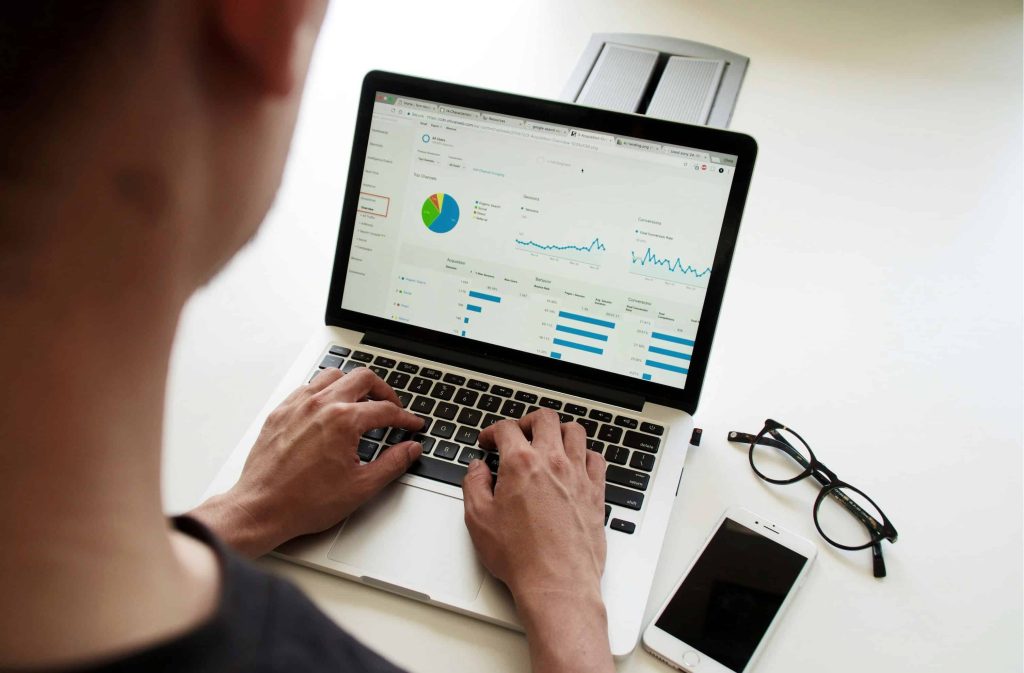
24 Feb The Ultimate Guide to Email Marketing for Art Promotion in 2025
Email Marketing Strategies for Art Promotion
In the digital age, email marketing remains one of the most effective and cost-efficient tools for promoting art. It provides a direct line of communication with your audience, making it a powerful strategy for artists, galleries, and art organizations to connect with collectors, enthusiasts, and potential patrons. With proper execution, email marketing allows for personalized engagement, fostering deeper relationships with your audience while showcasing your art in a professional and compelling way.
However, email marketing for art promotion presents its own unique challenges and opportunities.
Challenges:
- Building an Engaged Audience: Gaining subscribers who are genuinely interested in your art and not just casual observers.
- Standing Out in Crowded Inboxes: Capturing attention when your email is competing with countless others.
- Conveying Artistic Vision: Communicating the emotional depth and story behind your artwork through a digital medium.
Opportunities:
- Direct Communication: Create personal connections by reaching your audience in their inboxes.
- Personalized Experiences: Tailor emails to individual interests for a customized experience.
- Building Loyalty: Develop long-term relationships with collectors, patrons, and enthusiasts.

Building a Strong Email List
Organic List Building
Building your email list organically ensures quality over quantity. Here are proven methods to grow your audience naturally:
- Website Signup Forms: Include visually appealing pop-ups or embedded forms on key pages of your website, such as your homepage, blog, or gallery pages.
- Social Media Promotions: Use platforms like Instagram and Facebook to run contests, teasers, or promotions that require an email subscription.
- In-Person Events: Collect email addresses at gallery openings, workshops, or art fairs using signup sheets or digital kiosks.
- Content Upgrades: Offer exclusive resources like downloadable wallpapers, e-books, or behind-the-scenes videos in exchange for email signups.
Ethical List Acquisition
Avoid unethical practices like purchasing email lists, which can lead to spam complaints and damage your credibility. Instead:
- Be upfront about what subscribers can expect from your emails, such as exclusive offers or updates.
- Use clear opt-in forms that comply with regulations like GDPR and the CAN-SPAM Act.
Crafting Compelling Email Content
Visual Appeal
Art is a visual medium, so your emails should reflect this through stunning design:
- Use high-quality images of your artwork. Ensure they are optimized for fast loading without compromising quality.
- Incorporate GIFs or video snippets that showcase your creative process or exhibitions.
- Opt for clean, professional layouts that highlight your visuals without clutter.
Engaging Storytelling
Stories connect people emotionally, making your art more relatable:
- Share the inspirations and narratives behind your pieces.
- Offer behind-the-scenes glimpses of your studio or exhibition preparations.
- Humanize your content by including anecdotes or challenges you face as an artist.
Clear Calls to Action (CTAs)
Every email should have a purpose and guide the reader toward action:
- Encourage them to visit your online gallery or shop.
- Invite them to RSVP for exhibitions, workshops, or other events.
- Offer links to your social media channels for continued engagement.

Effective Email Marketing Tactics for Art Promotion
Personalized Email Campaigns
Personalization helps you connect with your audience on an individual level:
- Segment your audience by preferences, such as specific art styles or mediums.
- Send personalized emails, such as birthday greetings or curated recommendations.
- Use past interactions, like previous purchases, to suggest new pieces they might enjoy.
Automated Email Sequences
Automation saves time while ensuring consistent engagement:
- Create a welcome series that introduces your art, mission, and style.
- Develop nurture sequences that share your creative journey over time.
- Use abandoned cart emails to remind potential buyers of unfinished purchases.
Email Newsletters
Consistent newsletters keep your audience informed and engaged:
- Share updates about upcoming exhibitions or newly launched collections.
- Include artist spotlights or curated content that resonates with your subscribers.
- Offer sneak peeks into ongoing projects or exclusive collaborations.
Exclusive Previews and Offers
Reward your loyal subscribers with perks like:
- Early access to exhibitions or virtual tours.
- Limited-time discounts or promotions exclusive to your email list.
- Priority purchasing options for limited-edition or one-of-a-kind pieces.
Measuring and Optimizing Email Marketing Campaigns
Key Performance Indicators (KPIs)
Monitor these metrics to evaluate your campaign’s performance:
- Open Rates: Reflects how compelling your subject lines are.
- Click-Through Rates (CTRs): Indicates the effectiveness of your content and CTAs.
- Conversion Rates: Measures how many recipients take action, such as making a purchase or RSVP.
- Unsubscribe Rates: Highlights potential dissatisfaction with your emails.
A/B Testing
Experiment with different elements to optimize your campaigns:
- Test subject lines for different tones, lengths, or offers.
- Compare layouts, colors, and imagery to determine what appeals most to your audience.
- Try varying the timing and frequency of emails to find the sweet spot.
Continuous Improvement
Stay ahead by:
- Reviewing analytics regularly to spot trends and areas for improvement.
- Following email marketing trends to incorporate new techniques.
- Soliciting feedback from your subscribers to refine your approach.

Legal and Ethical Considerations
Compliance with Laws
Adhere to legal requirements to protect your business and audience:
- Obtain explicit consent before sending emails.
- Include clear and easy-to-use unsubscribe options.
- Ensure all sender information is accurate and transparent.
Data Privacy and Security
Build trust by safeguarding subscriber information:
- Use secure email marketing platforms.
- Regularly update your systems to protect against breaches or unauthorized access.
- Inform subscribers about how their data will be used.

Conclusion
Email marketing is an unparalleled tool for art promotion, offering a dynamic way to connect with a dedicated audience. By focusing on building an engaged list, crafting visually and emotionally compelling content, and adhering to best practices, artists and galleries can strengthen their presence and forge lasting connections with their audience. Consistency, creativity, and authenticity are key to success. Make your emails as inspiring and captivating as the art they represent, and watch your audience grow in appreciation and loyalty.
Key Takeaways
- Power of Email Marketing
- Email marketing is a cost-effective, personalized tool to connect with art collectors, enthusiasts, and patrons.
- Challenges include building a targeted audience, standing out in crowded inboxes, and effectively conveying artistic vision.
- Opportunities lie in direct communication, personalized experiences, and fostering loyalty.
- Building a Quality Email List
- Organic Growth: Use website signup forms, social media promotions, in-person events, and exclusive resources to attract subscribers.
- Ethical Practices: Avoid purchasing email lists; prioritize clear opt-ins and compliance with legal regulations.
- Crafting Engaging Content
- Visual Appeal: Feature high-quality images, clean layouts, and multimedia elements like GIFs or videos.
- Storytelling: Share personal anecdotes, inspirations, and behind-the-scenes glimpses to emotionally connect with your audience.
- Clear CTAs: Guide readers to take actions like visiting galleries, RSVPing for events, or following social media.
- Effective Tactics for Email Campaigns
- Personalization: Tailor emails based on audience preferences, past interactions, or special occasions.
- Automation: Use sequences for welcomes, nurturing, and reminders about abandoned purchases.
- Newsletters: Keep subscribers informed with updates, artist spotlights, and exclusive previews.
- Exclusive Offers: Reward subscribers with early access, discounts, or priority purchasing options.
- Measuring Success and Optimization
- Monitor key metrics like open rates, click-through rates, and conversions to gauge performance.
- Conduct A/B testing on subject lines, layouts, and timing to identify what resonates with your audience.
- Continuously review analytics and adapt strategies for improvement.
- Legal and Ethical Best Practices
- Ensure compliance with laws (e.g., GDPR, CAN-SPAM) by obtaining consent, providing unsubscribe options, and maintaining transparency.
- Protect subscriber data with secure platforms and regular updates, fostering trust in your brand.
- Conclusion
- Email marketing offers a dynamic way to connect with art enthusiasts, build lasting relationships, and grow your audience.
- By combining consistency, creativity, and authenticity, you can inspire loyalty and appreciation as effectively as your art itself.
FAQs
How can artists build an engaged email list without buying contacts?
Building an engaged email list requires organic growth strategies that attract genuinely interested subscribers. Artists can use website signup forms, social media promotions, in-person events, and content upgrades like exclusive downloads. Ethical list-building ensures a higher-quality audience and avoids spam complaints, fostering stronger connections with potential collectors and patrons.
What type of content should artists include in their email marketing campaigns?
Artists should focus on visually compelling and emotionally engaging content. High-quality images, GIFs, or short videos showcasing their creative process enhance visual appeal. Storytelling—such as sharing inspirations, behind-the-scenes glimpses, or personal anecdotes—helps create emotional connections. Clear calls to action (CTAs) encourage engagement, whether through gallery visits, event RSVPs, or social media follow-ups.
How can artists measure and optimize the success of their email marketing efforts?
Success in email marketing is measured through key performance indicators (KPIs) like open rates, click-through rates (CTR), and conversions. A/B testing helps optimize subject lines, layouts, and email timing. Continuous improvement comes from analyzing campaign data, tracking audience preferences, and refining content strategies to increase engagement and effectiveness.
Want to make your art collection exhibitions more engaging and inclusive? Learn creative strategies to transform traditional exhibits into interactive experiences that inspire community participation, cultural dialogue, and a shared appreciation for the arts.

